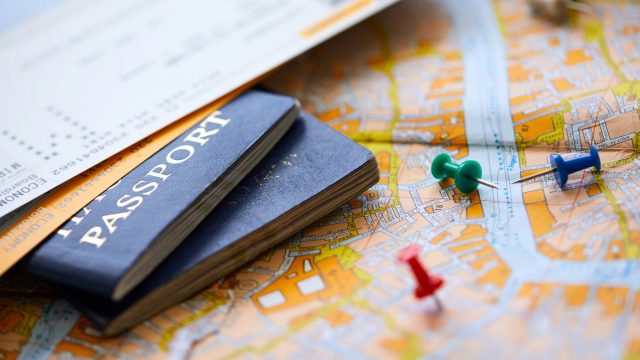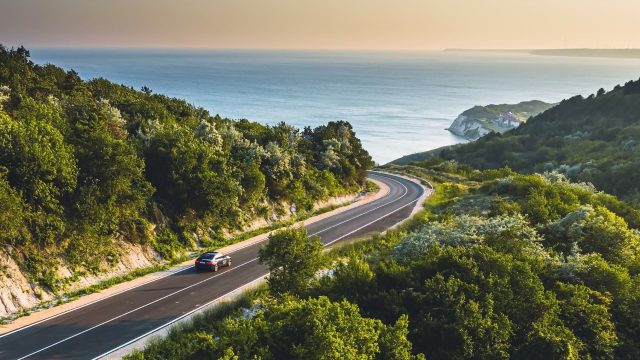When you go on holiday, dangerous animals are usually the last things on your mind (unless you’re off on safari or going to Australia). It’s this lack of expectation that can be your downfall. If you know there are dangerous things around, you take care and keep an eye out. This may work with larger animals but what the smaller ones?
Whilst you’ll know of many of these creatures, their distribution and range may surprise you. So here’s a list of some of the dangerous animals to avoid on holiday.
Australia
Cone Snail
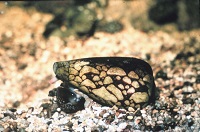 Photo by: Dr. James P. McVey
Photo by: Dr. James P. McVey
Deadliness: 8/10
There are over 500 species and some are particularly lethal – a drop of Marbled Cone Snail venom can kill 20 people! There is no anti-venom so be very careful! A bad sting can lead to vision loss, respiratory failure, muscle paralysis, and death. Also found in the Caribbean, along the African coast, and in the Red Sea.
Stonefish
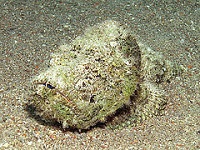 Photo by: bbmexplorer.com
Photo by: bbmexplorer.com
Deadliness: 8/10
A fish that looks like a stone, should be easy to spot! The poisonous spines on its back carry a toxin that cause swelling, necrosis, paralysis, and ultimately death if left untreated.
Box Jellyfish
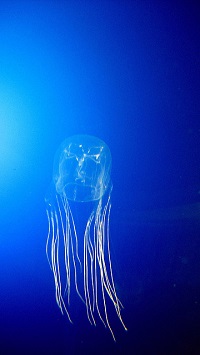 Photo by: Guido
Photo by: Guido
Deadliness: 10/10
Considered the most venomous creature on earth. The venom attacks the heart and nervous system and is so painful many victims go in to shock and drown or die of heart failure before even reaching shore. The initial pain is said to be similar to holding a lit cigarette on your skin and some reports say the victims were screaming in pain whilst unconscious!
Blue Ringed Octopus
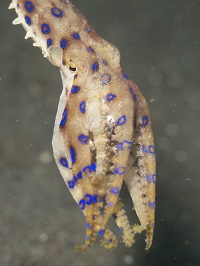 Photo by: Elias Levy
Photo by: Elias Levy
Deadliness: 9/10
One of the most venomous things in the sea and the size of a golf ball. If you see it, swim away fast. Its venom can cause blindness, nausea, paralysis (not good when you’re swimming), respiratory failure, and death.
Sydney Funnel Web Spider
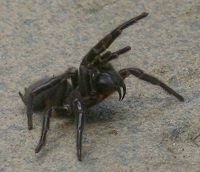 Photo by: Tirin
Photo by: Tirin
Deadliness: 7/10
Found within 100km of Sydney, they strike repeatedly ensuring all venom is delivered. There have been no recorded deaths since an anti-venom was created but a bite will ruin your holiday. The bite is painful due to the size of the fangs and the spider often remains attached until you shake it off.
Eastern Brown Snake
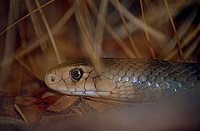 Photo by: Bernard DUPONT
Photo by: Bernard DUPONT
Deadliness: 7/10
The most common cause of snake bite deaths in Australia – Eastern Brown Snakes account for 76% of all snake bites. Can grow to 2m in length and are fast. Death is unlikely due to an excellent anti-venom programme but be careful! Death is caused by progressive paralysis whilst the venom also contains a strong anti-coagulant.
Saltwater Crocodile
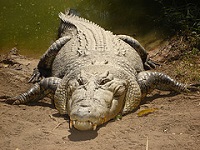 Photo by: fvanrenterghem
Photo by: fvanrenterghem
Deadliness: 10/10
Can grow up to 17ft in length and weigh up to 3,000lbs. They will treat humans in their territory as prey and have killed over 100 people in Australia in the last 40 years. Keep an eye out for launching sites, ripples in the water, and eyes watching you from the surface.
Inland Taipan Snake
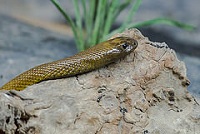 Photo by: Doc. Di0
Photo by: Doc. Di0
Deadliness: 10/10
The most venomous snake in the world. One drop of venom can kill 100 people. Although there are no reported deaths, the Taipan could kill within 45 minutes if left untreated. Very rarely seen and therefore few cases of reported bites.
Giant Stinging Tree
Deadliness: 5/10
Yep in Australia, you also need to be careful of the trees! “Being stung is the worst kind of pain you can imagine – like being burnt with hot acid and electrocuted at the same time,” says Marina Hurley, a Stinging Tree specialist. Treatment involves waxing the affected area immediately to pull out the needles. The sting has been known to remain for up to TWO YEARS. Avoid at all costs!
Costa Rica
Brazilian Wandering Spider
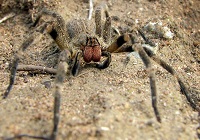 Photo by: Techuser
Photo by: Techuser
Deadliness: 7/10
One of the most venomous creatures on earth with an extremely painful bite. Can cause paralysis and death.
France
Montpellier Snake
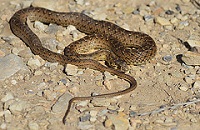 Photo by: Alexandre Roux
Photo by: Alexandre Roux
Deadliness: 4/10
Found all around the Mediterranean. Whilst venomous, they offer little or no threat to humans due to the shape and location of their fangs. The venom is not particularly toxic but the elderly or children should be careful.
Tiger Mosquito
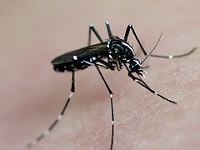 Photo by: frankieleon
Photo by: frankieleon
Deadliness: Depends on the mozzy
Originating in Asia, the Tiger Mosquito has been found in southern France and the Mediterranean for some years now. Has been known to transmit viruses, such as Yellow fever, Dengue fever, and Chikungunya fever.
Asp Viper
See Italy
Italy
Montpellier Snake
See France
Asp Viper
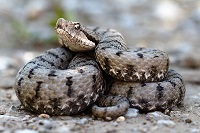 Photo by: Felix Reimann
Photo by: Felix Reimann
Deadliness: 4/10
Found throughout Italy, in the southern half of France, Switzerland, and the Pyrenees. More dangerous than an adder, around 4% of Asp Viper bites are fatal. Small, usually no longer than 30cm with a triangular head. Bites are painful and can severely impair vision. Death can be caused due to renal failure.
Greece
Weever Fish
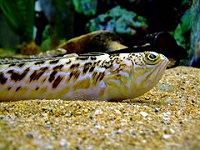 Photo by: Max Bashirov
Photo by: Max Bashirov
Deadliness: 1/10 (unless you lose consciousness in the sea)
Common around the UK and Europe. Most stings are inflicted by the lesser Weever, which buries itself in sandy areas of shallow water. Weever stings cause severe pain, itching, swelling, numbness, tingling, nausea, vomiting, joint aches, headaches, abdominal cramps, light-headedness, and in some cases unconsciousness.
Mediterranean Scorpion
Deadliness: 2/10
Not particularly dangerous, but painful. Wear good walking boots with high ankles when hiking in dry and rocky areas.
Portugal
Western False Smooth Snake
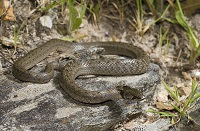 Photo by: Benny Trapp
Photo by: Benny Trapp
Deadliness: 2/10
Found all over Portugal in Mediterranean-type shrubby vegetation, and rocky areas. Venomous but not a big threat to humans.
Seoane’s Viper
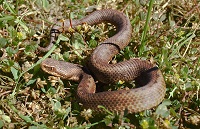 Photo by: Keta
Photo by: Keta
Deadliness: 2/10
Found in the very north of both Portugal and Spain. This venomous snake is not considered life threatening for a healthy human. The elderly and children are at more risk but should not experience any major complications.
Lataste’s Viper
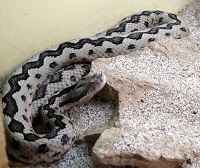 Photo by: Tim Vickers
Photo by: Tim Vickers
Deadliness: 2/10
A dangerous looking snake, you may see it day or night (if you have a torch!). Easily recognised by it’s yellow tipped tail.
North Africa
Deathstalker Scorpion
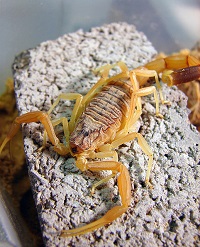 Photo by: Matt Reinbold
Photo by: Matt Reinbold
Deadliness: 5/10
Although healthy adults usually only feel agonising pain, those with heart problems could die as the venom causes respiratory failure. Fever, coma, convulsions, and paralysis are all to be expected. Children are also highly at risk.
Carpet Viper
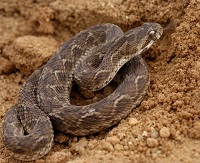 Photo by: Saleem Hameed
Photo by: Saleem Hameed
Deadliness: 7/10
Sometimes called a saw-scaled viper, it’s probably the most dangerous snake in Africa. They offer a warning by rubbing their serrated scales together which makes a sawing sound. If you hear it, freeze. They are quick to bite when threatened and sometimes bury themselves in sand.
Southern & South Africa
Mosquito
Deadliness: As with the Tiger Mosquito, depends on the individual
You know the deal with these little sods. Can spread Dengue fever, Chikungunya, and yellow fever viruses, and any number of other diseases. Use a mosquito net and the latest repellent. Apparently they’re becoming immune to DEET.
Puff Adder
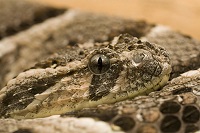 Photo by: Julius Rückert
Photo by: Julius Rückert
Deadliness: 7/10
Number one cause of snake bite fatalities in Africa. Bites are extremely painful and symptoms can include edema, shock, watery blood oozing from the puncture wounds, nausea and vomiting, blood blisters, and a painful swelling of the regional lymph nodes. If untreated gangrene and necrosis are likely. Death is due to loss of blood or poor treatment.
Hippopotamus
Deadliness: 10/10
They can kill crocodiles and are the number one large animal cause of human fatalities in Africa. They can reach speeds of up to 30kph and weigh up to 1,500kg. I dare you to stand in front of one! Never get between a hippo and its water source, and never leave a vehicle when there are hippos around.
Nile Crocodile
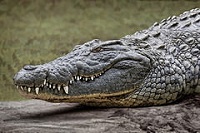 Photo by: Steve Slater
Photo by: Steve Slater
Deadliness: 10/10
Nile crocs have extremely powerful jaws and once they get their teeth into something, it’s almost impossible to make them let go. Responsible for hundreds of deaths each year, the Nile crocodile is common and dangerous.
Black Mamba
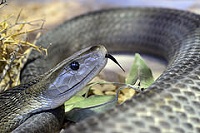 Photo by: Herman Pijpers
Photo by: Herman Pijpers
Deadliness: 7/10
The fastest snake in Africa and as dangerous as the Carpet Viper. Its venom causes nerve damage leading to paralysis whilst death occurs through respiratory failure.
Spain
Lataste’s Viper
See Portugal.
Western False Smooth Snake
Deadliness: 2/10
Found all over Spain in Mediterranean-type shrubby vegetation, and rocky areas. Venomous but not a big threat to humans.
Montpellier Snake
See France.
Black Widow Spider
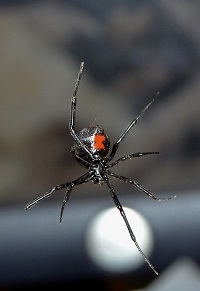 Photo by: Frönk
Photo by: Frönk
Deadliness: 3/10
One of the most famous species of spider in the world. Not particularly venomous compared to other creatures on this list and very unlikely to kill. Anti-venom is used as a pain relief rather than a cure.
Mediterranean Scorpion
See Greece.
Megarian Banded Centipede
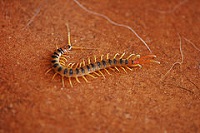 Photo by: liesvanrompaey
Photo by: liesvanrompaey
Deadliness: 1/10
Very common and although not dangerous to healthy humans, it can give a nasty bite similar to a wasp or bee sting. Have been known to cause anaphylactic shock.
USA
Grizzly Bears
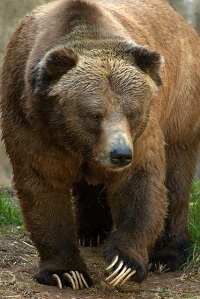 Photo by: Valerie
Photo by: Valerie
Deadliness: 8/10
Very rare but if travelling in the back country, it’s a good idea to carry bear mace in case of attack. Once you use it though, get rid of the can as it will then attract other bears! Back away slowly or escape by climbing a tree.
Black Bears
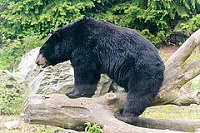 Photo by: Eric Kilby
Photo by: Eric Kilby
Deadliness: 7/10
More common and smaller than Grizzlies, Black Bears are however just as dangerous. They’re fast and can climb trees so think twice before heading up the nearest Fraser Fir. Usually they will make mock charges but a number of hikers on the Appalachian Trail have been killed by Black Bears over the years.
Rattlesnakes
 Photo by: tom spinker
Photo by: tom spinker
Deadliness: 6/10
If you hear the rattle, back away. Rattlers usually only strike humans if cornered or threatened and are more likely to flee than attack. Evolution is playing a nasty trick though as many snakes have been killed due to the rattle giving away their location. As a result, many Rattlesnakes no longer rattle!
Copperheads
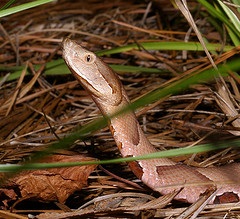 Photo by: tom spinker
Photo by: tom spinker
Deadliness: 4/10
These aren’t particular aggressive or venomous but should still be given a wide berth. Bites can cause extreme pain, tingling, throbbing, swelling, and severe nausea. Damage can occur to muscle and bone tissue, especially when the bite occurs in outer extremities such as the feet or hands.
Cottonmouths (Water Moccasins)
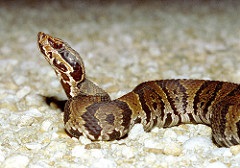 Photo by: tom spinker
Photo by: tom spinker
Deadliness: 5/10
A dangerous snake if provoked, they will stand their ground ready to strike. Bites can lead to severe scarring or even amputation. Can cause anaphylactic shock in some individuals.
Alligators & Crocodiles
Deadliness: 8/10
Both are capable of killing humans although crocodiles are arguably the more dangerous of the two. Alligators are to be expected in Florida, Louisiana, Georgia, Mississippi, and Texas. The main cause of death is usually infection from the bite rather than the bite itself.
Black Widow Spider
See Spain.
Bark Scorpion
Deadliness: 5/10
Found in Arizona, the sting of a Bark Scorpion can cause severe pain, numbness, tingling, vomiting, and temporary paralysis in the limb. An extreme reaction to the venom is indicated by numbness, frothing at the mouth, paralysis, and a difficulty in breathing.
Worldwide
Portuguese Man of War
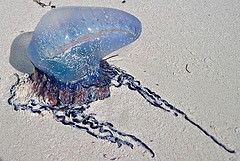 Photo by: James St John
Photo by: James St John
Deadliness: 10/10
In oceans along the Equator, northern Australia, and the Mediterranean.
Great White Shark
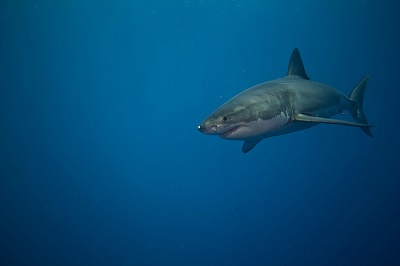 Photo by: Scubaben
Photo by: Scubaben
Deadliness: 3/10
Found worldwide. The most northerly confirmed sighting was in the Bay of Biscay and they are spotted in the Mediterranean fairly regularly. The only surprising thing about their habitat is that we don’t have them in the UK as conditions are perfect.
Good luck!
If you do see any of these, remember, don’t panic. It’s highly unlikely you’ll be bitten or stung as long as you’re sensible. If you have any stories regarding these or any other animal abroad, let us know below. Bonus points go to those who have photos!
If you’d rather see some animals from the safety of a car, check out our post on a self-drive safari in South Africa.
Remember, if you want to be kept up to date with all the latest deals and news, sign up to our newsletter and follow us on Facebook and Twitter.
Subscribe to our newsletter
Want our blogs emailed direct to you? Sign up below to get updates featuring our blogs and car hire top tips. Receive the best deals on car hire straight to your inbox.

